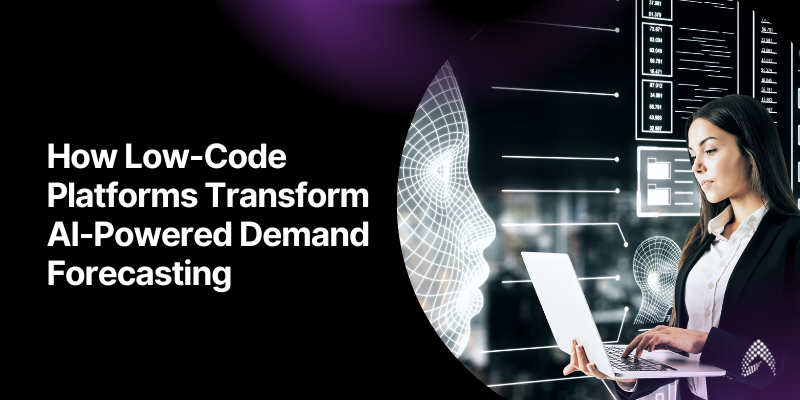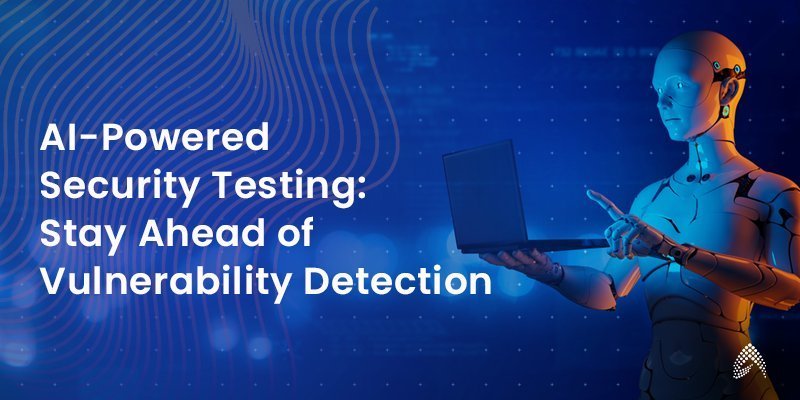Optimizing Demand Forecasting with AI and Low-Code Technology

Accurate demand forecasting is a cornerstone of effective business operations, enabling organizations to optimize inventory, streamline production schedules, and enhance supply chain logistics. Yet, traditional forecasting methods, often based on statistical models and expert intuition, may struggle to keep up with the fast-paced and unpredictable nature of modern markets.
Low-code platforms offer a robust solution to these challenges. With user-friendly interfaces and pre-built components, these platforms empower organizations to build and deploy advanced AI-powered forecasting models without extensive coding expertise. By simplifying the development process, low-code platforms make AI more accessible to businesses of all sizes, enabling them to leverage data-driven insights for improved decision-making.
In this blog post, we’ll explore the advantages of using low-code platforms for demand forecasting, along with real-world use cases that highlight their potential.
Benefits of Low-Code Platforms
Low-code platforms have reshaped the approach to AI-driven demand forecasting. With streamlined development tools, these platforms enable businesses to deploy forecasting models more efficiently, meeting changing demands and creating more responsive solutions. Here are a few key benefits:
Rapid Development
Low-code platforms allow organizations to build and deploy AI-powered forecasting solutions quickly, significantly speeding up the overall development process.
Cost Efficiency
By reducing the need for large development teams, low-code platforms can lead to substantial savings in both development and maintenance costs.
Increased Agility
These platforms allow for quick adjustments in response to evolving market conditions and business needs, enhancing organizational flexibility.
Democratization of AI
By simplifying complex processes, low-code platforms bring AI within reach for more users, empowering a wide range of businesses to harness the power of AI for demand forecasting.
Now that we’ve explored the advantages of low-code platforms, let’s look at how they’re being applied in real-world scenarios across various industries.
Real-World Use Cases
Low-code platforms are being embraced across industries as a solution to specific forecasting challenges, delivering efficiency and agility. By simplifying AI model development, these platforms allow organizations to quickly adapt to market demands and improve forecasting accuracy. Here’s how industries like retail, manufacturing, and healthcare are transforming their demand forecasting processes:
Retail Industry
Personalized Product Recommendations
Major retailers can use low-code platforms to develop models that analyze customer purchase history, browsing behavior, and demographics to provide tailored product recommendations.
Optimized Inventory Management
By predicting demand accurately, retailers can optimize inventory levels, minimize stockouts, and reduce markdowns, improving both sales and customer satisfaction.
Manufacturing Industry
Demand Forecasting for Seasonal Products
Low-code platforms can help manufacturers forecast demand for seasonal items, such as winter gear or summer apparel, allowing for better production and inventory planning.
Supply Chain Optimization
With more precise demand forecasting, manufacturers can streamline their supply chains, reduce lead times, and improve overall operational efficiency.
Healthcare Industry
Drug Demand Prediction
Pharmaceutical companies can leverage low-code platforms to forecast demand for specific medications, optimizing production schedules and distribution efforts.
Patient Volume Forecasting
Healthcare providers can predict patient volumes, enabling them to allocate resources effectively and enhance patient care. See how low-code and AI are helping transform patient education: Read blog here.
As we’ve seen, low-code platforms significantly enhance demand forecasting capabilities across various industries, delivering practical benefits that lead to improved decision-making and operational efficiency. To further amplify these advantages and navigate the complexities of demand forecasting, many organizations are adopting a hybrid approach that combines the power of artificial intelligence with human expertise.
The Hybrid Approach: Integrating AI with Human Expertise
While low-code platforms provide the tools to create sophisticated AI-powered forecasting models, a hybrid approach that combines AI with human insight often yields the best results. AI can analyze large volumes of data and uncover complex patterns, while human judgment allows for strategic interpretation and actionable decision-making.
Key Benefits of a Hybrid Approach
Enhanced Forecast Accuracy
Combining AI-driven data analysis with human oversight can improve the reliability of forecasting results.
Informed Decision-Making
Human analysts can contextualize AI-generated insights, making data-driven decisions that are aligned with broader business goals.
Adaptability
A hybrid approach enables organizations to respond more effectively to evolving market trends and changes.
Transparency and Accountability
Human analysts provide transparency by understanding the factors driving AI-generated forecasts, which increases accountability and fosters trust.
Practical Tips for Implementing a Hybrid Approach
Data Quality
Ensuring clean, relevant data is essential for training effective AI models.
Model Selection
Choose AI models that align with specific organizational needs and the complexity of the forecasting requirements.
Collaborative Workflows
Encourage collaboration between AI systems and human experts to enhance forecasting accuracy and relevance.
Continuous Monitoring and Optimization
Regularly evaluate model performance to identify areas for improvement and ensure continued accuracy.
By adopting a hybrid approach, organizations can maximize the potential of demand forecasting, leveraging both AI and human expertise to make informed, data-driven decisions.
The Future of Demand Forecasting: Emerging Trends
The field of demand forecasting is constantly evolving, and new technologies are emerging that can further enhance the accuracy and efficiency of forecasting models. Here are some of the most promising trends:
Generative AI
Enhanced Data Generation
Generative AI can be used to create synthetic data, which can be used to train AI models and improve their accuracy.
Improved Forecasting Models
Generative AI can help develop more sophisticated forecasting models by identifying complex patterns and relationships in data.
IoT Integration
Real-time Insights
By integrating IoT data into forecasting models, businesses can gain real-time insights into customer behavior, supply chain operations, and market trends.
Predictive Maintenance
IoT data can be used to predict equipment failures and optimize maintenance schedules, reducing downtime and improving operational efficiency.
As these technologies continue to advance, we can expect to see even more innovative and effective solutions for demand forecasting in the future. By embracing these emerging trends, businesses can gain a competitive edge and drive growth.
Conclusion
Low-code platforms have emerged as a powerful tool for democratizing AI-driven demand forecasting. By making sophisticated forecasting models accessible without requiring extensive coding skills, these platforms enable businesses to improve forecast accuracy, reduce operational costs, and increase agility in a rapidly changing market.
Combining the strength of AI with human expertise allows organizations to achieve even greater precision in their forecasting efforts, gaining a competitive edge. As low-code platforms continue to evolve, we can expect even more innovative solutions to emerge for demand forecasting.
Amzur, a leader in digital transformation, is here to help your organization harness low-code AI to revolutionize your demand forecasting process. We offer tailored solutions, including personalized consultations and assessments, to identify your specific needs and develop effective strategies.
Explore our AI-driven low-code automation whitepaper to learn more about how we can assist you in building customized forecasting solutions that drive growth and efficiency

Technical Architect




